Pattern
The Pattern Of Male Baldness
The Norwood scale (developed in 1975 by Dr. O'tar Norwood) shows how genetically determined baldness usually proceeds, and it is used by doctors to classify

Class I: This is the adolescent hairline, without balding.
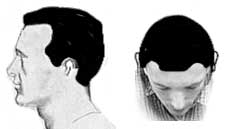
Class II: This is the hairline of adult men - typically an M shape with the hair going slightly back on the sides of the temple, but again this is not balding.
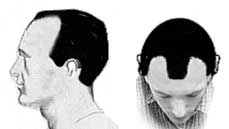
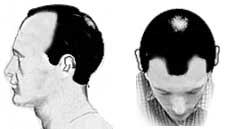
Class III: This is the beginning of balding, with the hairline going back farther on the sides of the temple. The hair on the crown of the head (the vertex) begins to thin.
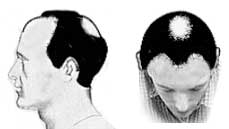
Class IV: The bald spot on the crown of the head becomes bigger and the hair goes back further over the forehead, but there is still a solid band of hair across the top of the head.
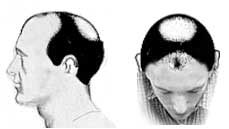
Class V: The bridge of hair separating the frontal hair loss and the hair loss on the crown begins to spread down.
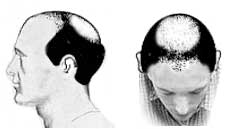
Class VI: The hair on the top of the head disappears to leave a single bald area from the front of the head to the crown.
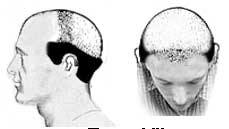
Class VII: Hair remains on only the sides and back of the head.
There is also a Type A variant on this scale where the hair is lost from front to back, without early hair loss in the crown of the head and a connecting bridge of hair between the sides of the head.
Understanding how men lose hair has helped scientists and doctors develop treatments to prevent and even reverse hair loss, and to surgically restore them. Generally, the earlier the hair loss is treated, the better the outcome. But, for the first time in history, proven treatments for hair re-growth and replacement exist today.






